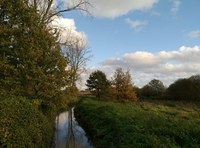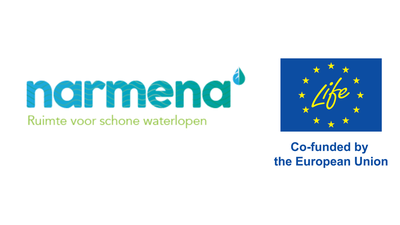LIFE NARMENA creates wetlands on the Laak and Winterbeek rivers
Two types of non-invasive, nature-based remediation methods have been tested, in which the remediation of the soil (and the river bed) is focused on nature conservation and water storage.
NARMENA: what and why?
In the NARMENA project, demonstration projects are planned in the valleys of three watercourses contaminated with metals: the Grote Calie (Turnhout-Kasterlee region), the Winterbeek (Scherpenheuvel-Zichem region), and the Laak (Geel-Zammel region). By establishing phytoremediation fields and constructed wetlands, we can significantly reduce the bioavailability of metals, thereby reducing or eliminating potential risks to the ecosystem. As watercourse manager of the Laak and the Winterbeek, the VMM will work with other partners to create constructed wetlands in these areas.
Purpose of the project
 The results and experiences of NARMENA will inspire us to develop a framework for the application of these cost-effective nature-based remediation solutions. These results will be compared with conventional remediation techniques and the findings disseminated within the EU, so we can encourage the competent authorities to apply these techniques (more often) in sensitive natural areas.
The results and experiences of NARMENA will inspire us to develop a framework for the application of these cost-effective nature-based remediation solutions. These results will be compared with conventional remediation techniques and the findings disseminated within the EU, so we can encourage the competent authorities to apply these techniques (more often) in sensitive natural areas.
NARMENA in Europe
LIFE NARMENA is being carried out on behalf of the European Commission within the LIFE Projects programme led by the Public Waste Agency of Flanders (OVAM).
| Project partners | |
|---|---|
| Belgium |
OVAM Flanders Environment Agency (VMM) Agentschap Natuur en Bos Natuurpunt ABO NV Bio2Clean ARCHE Consulting cvba |



